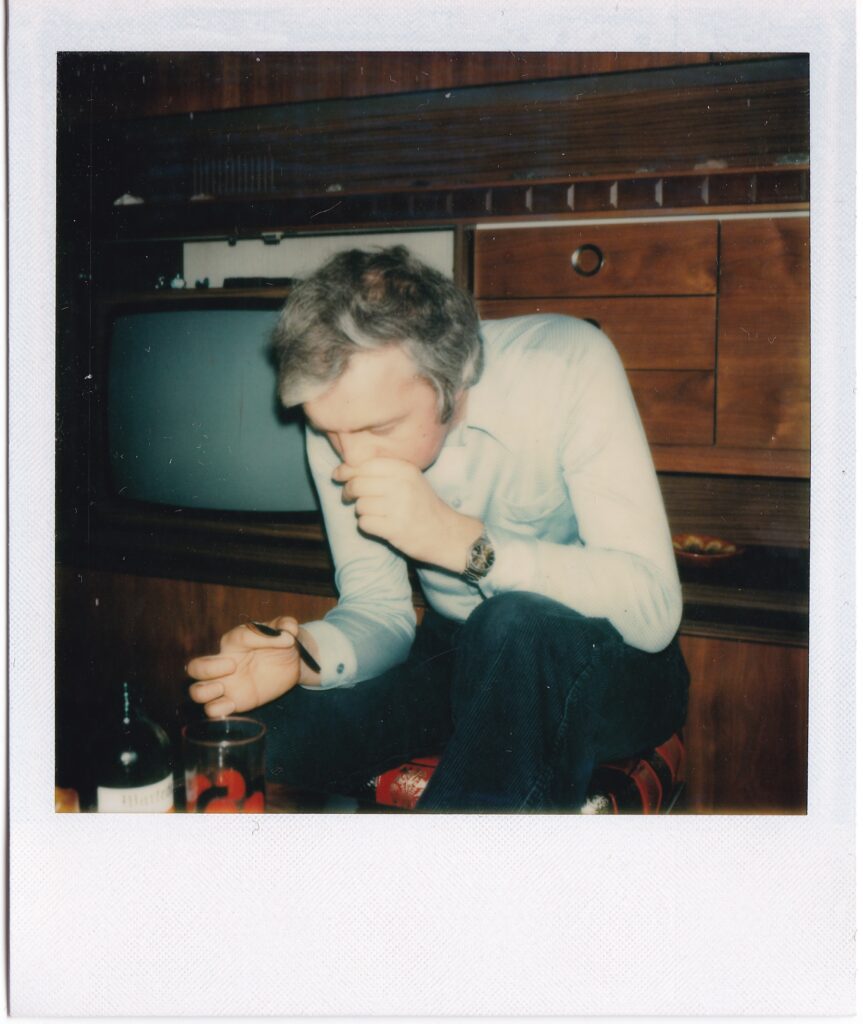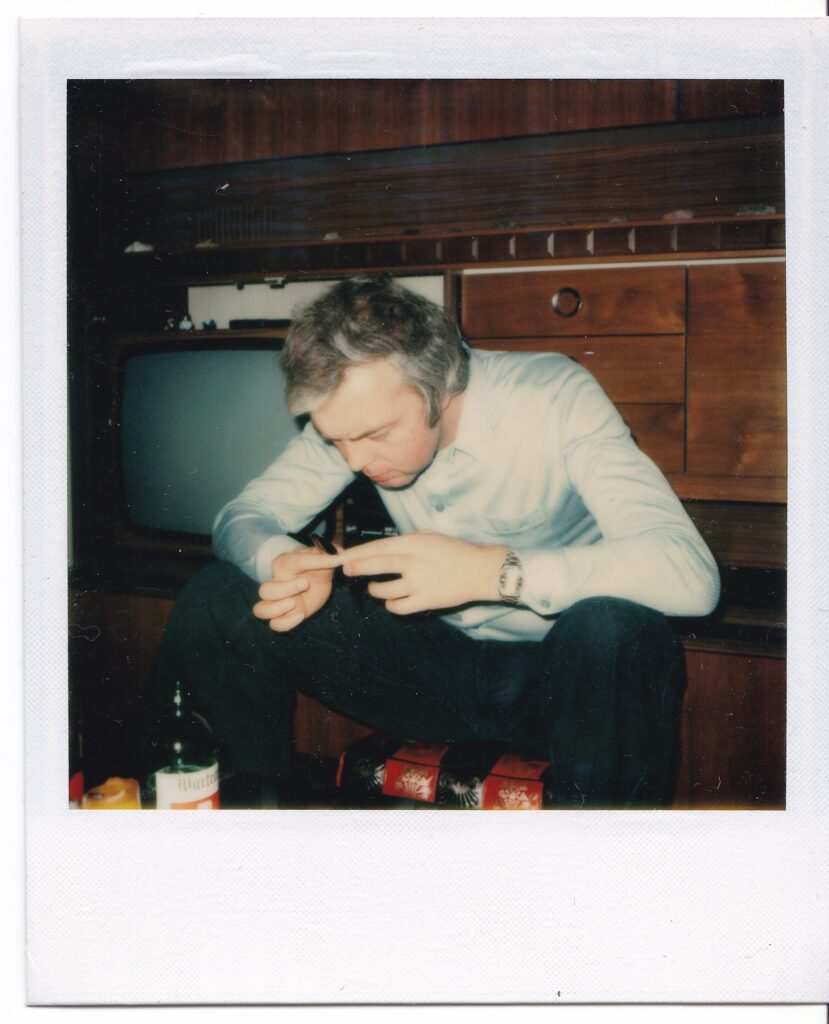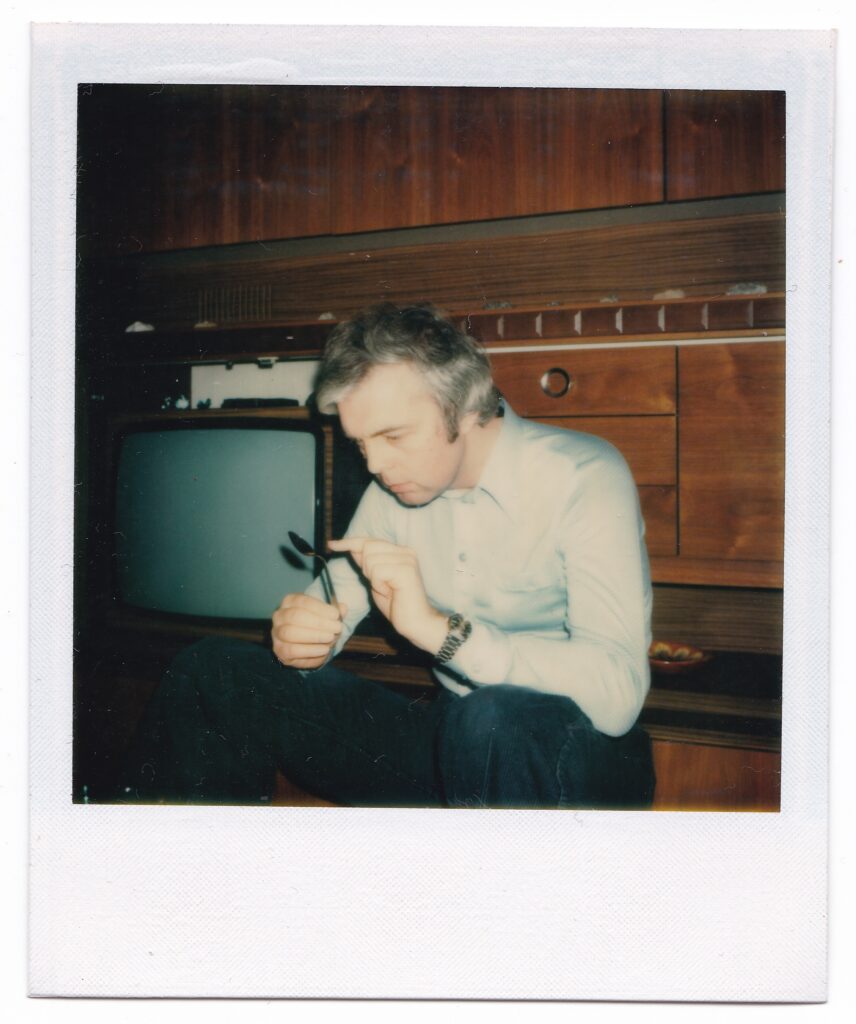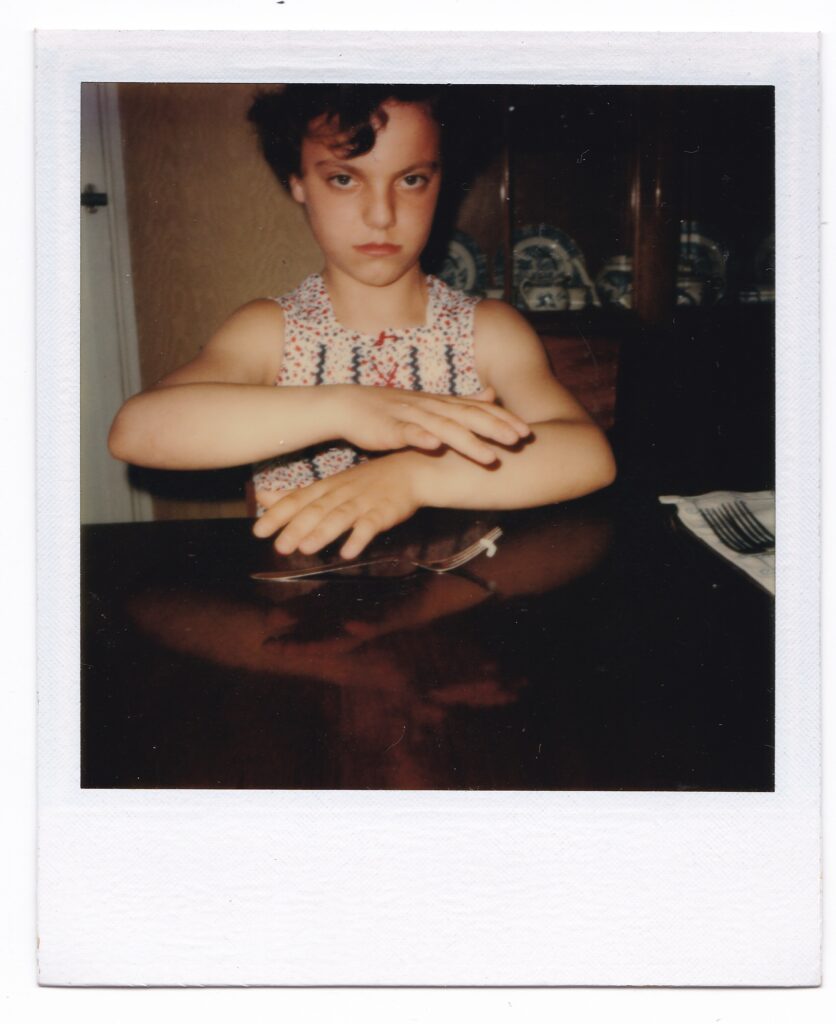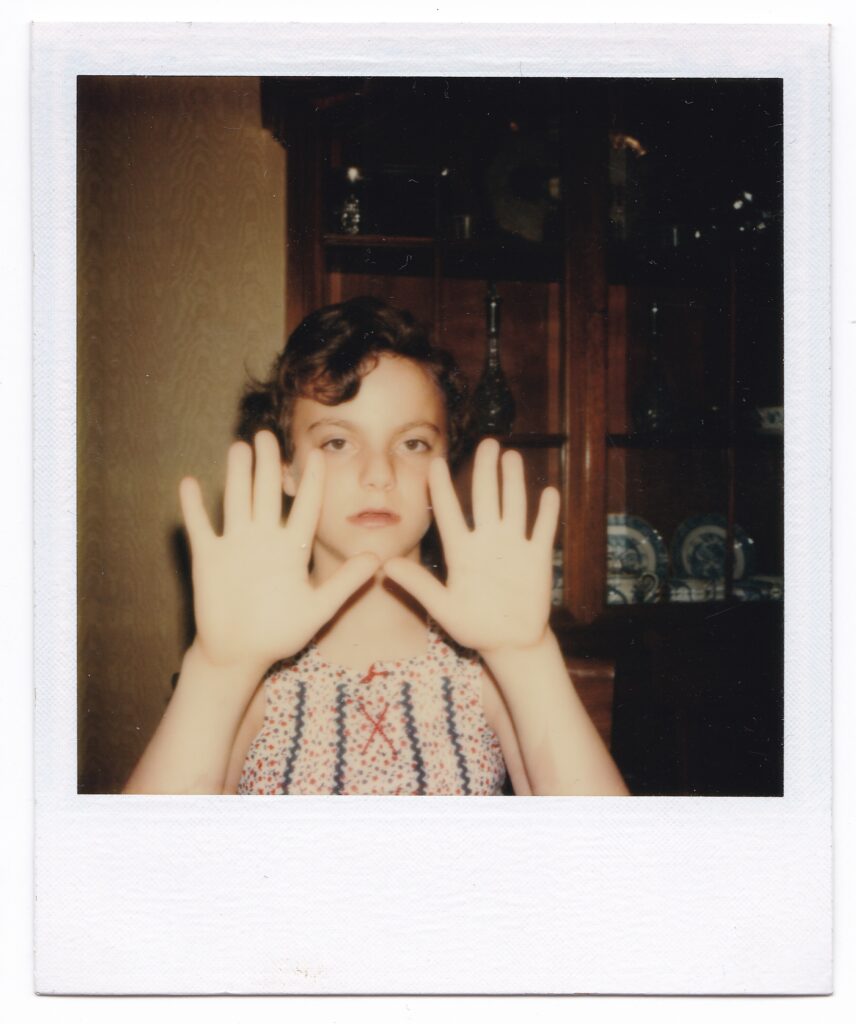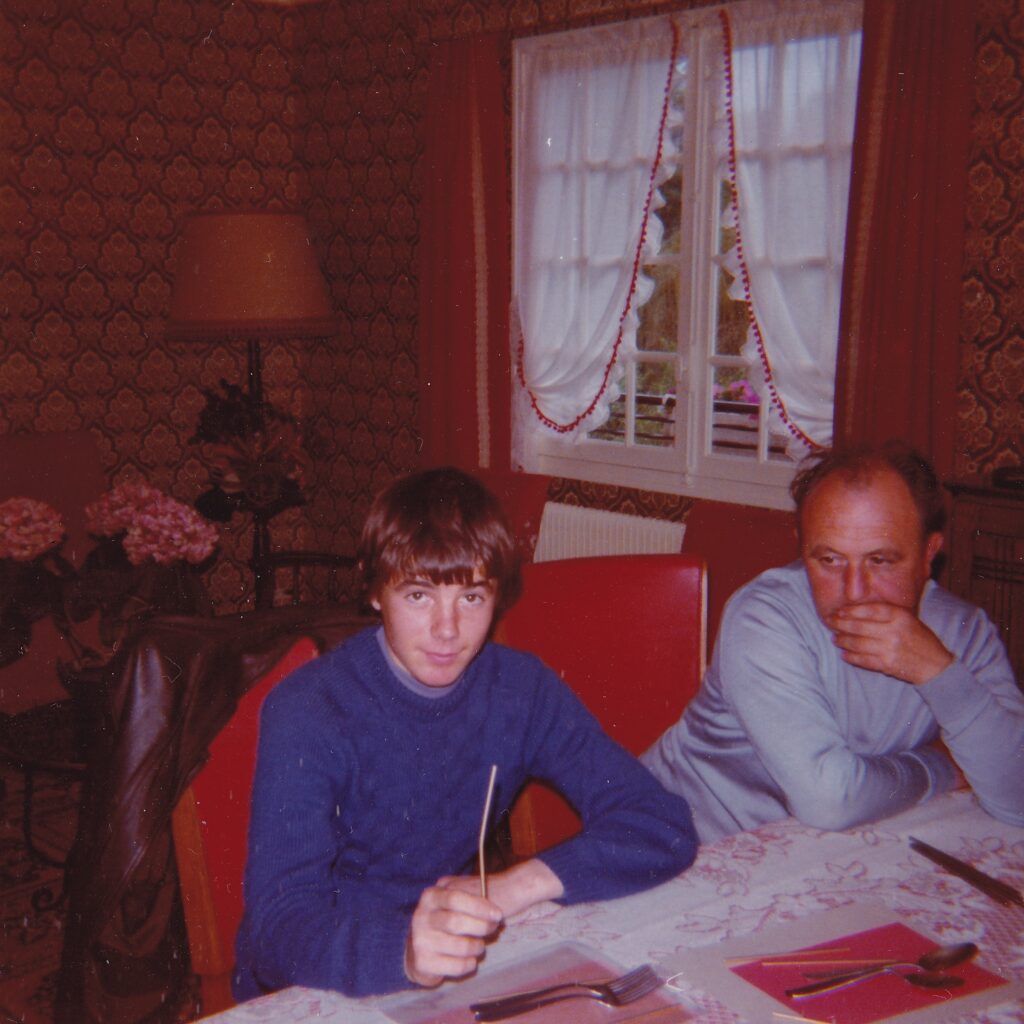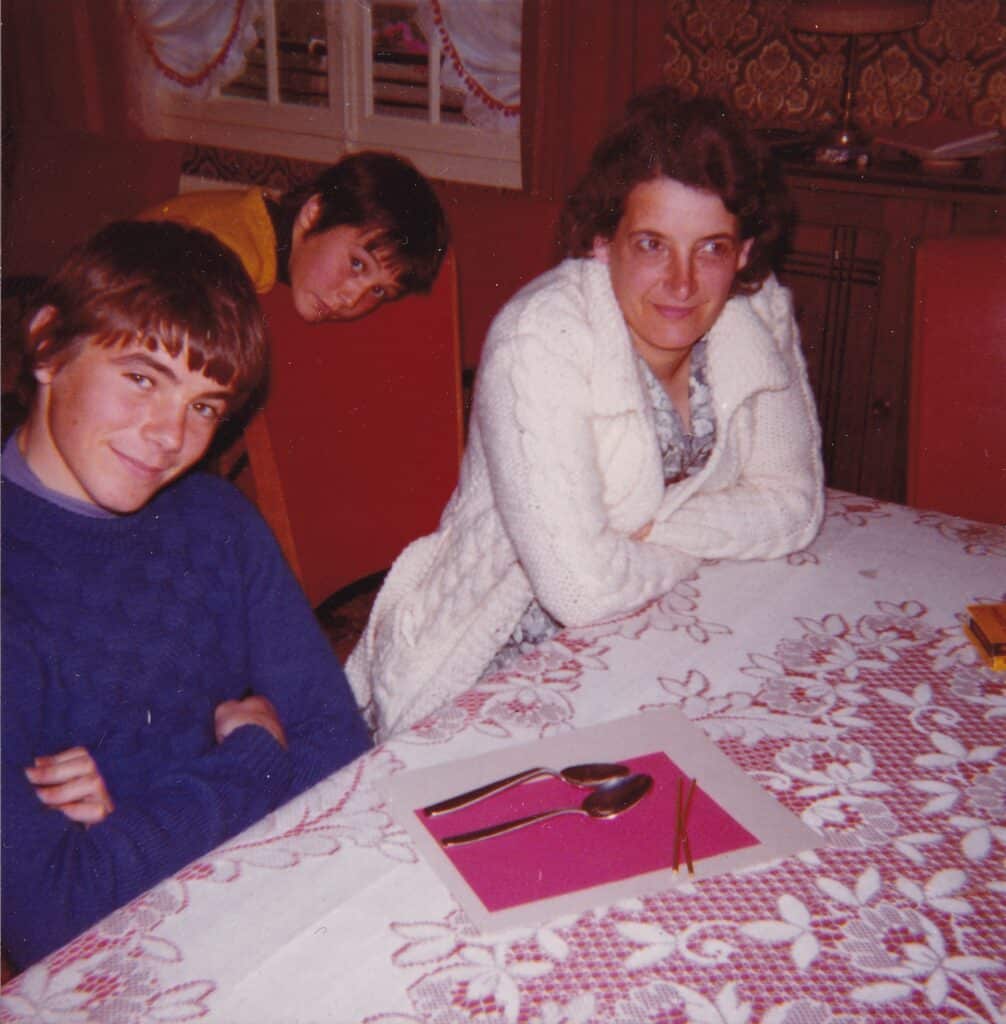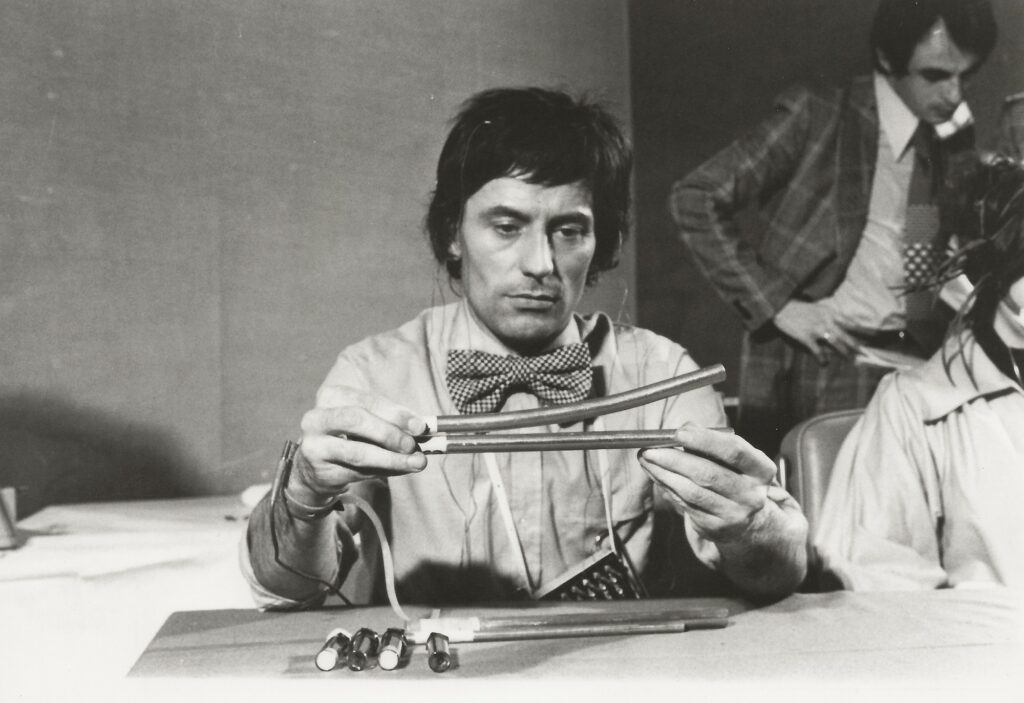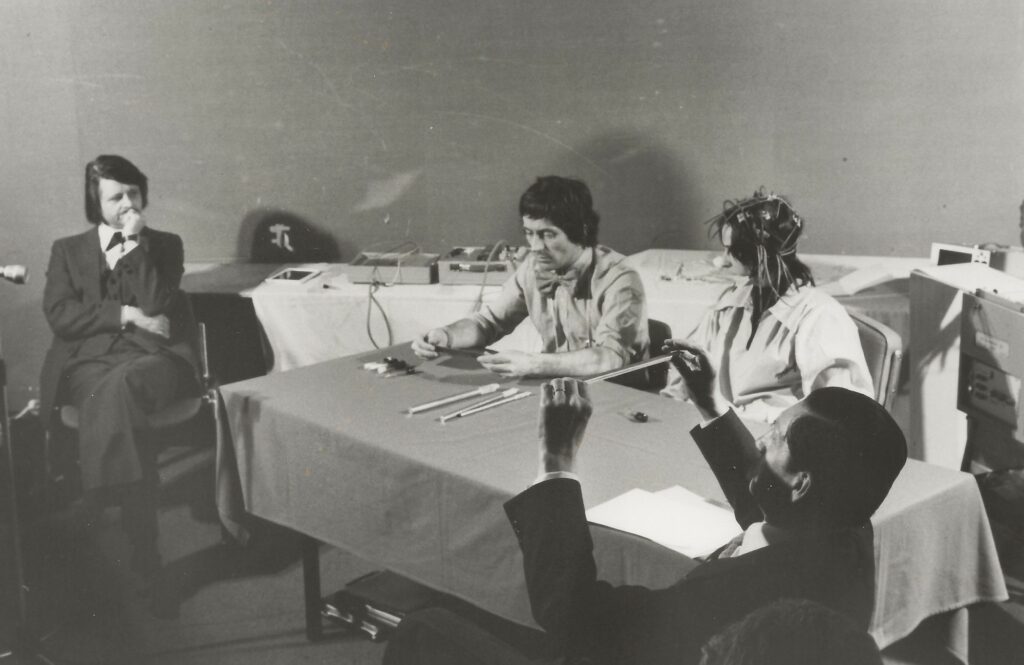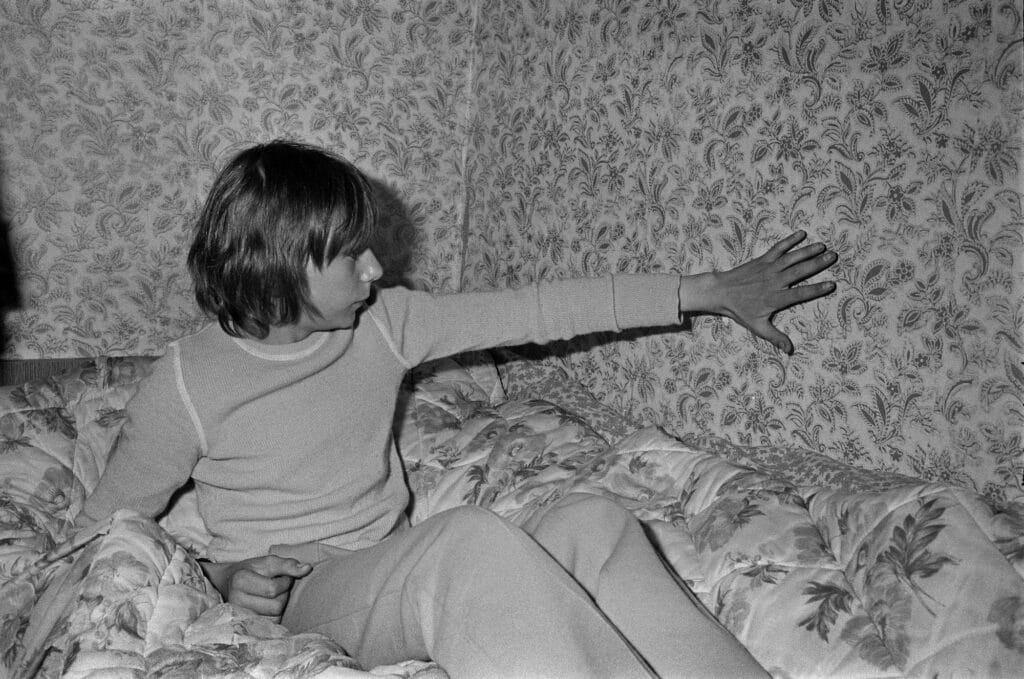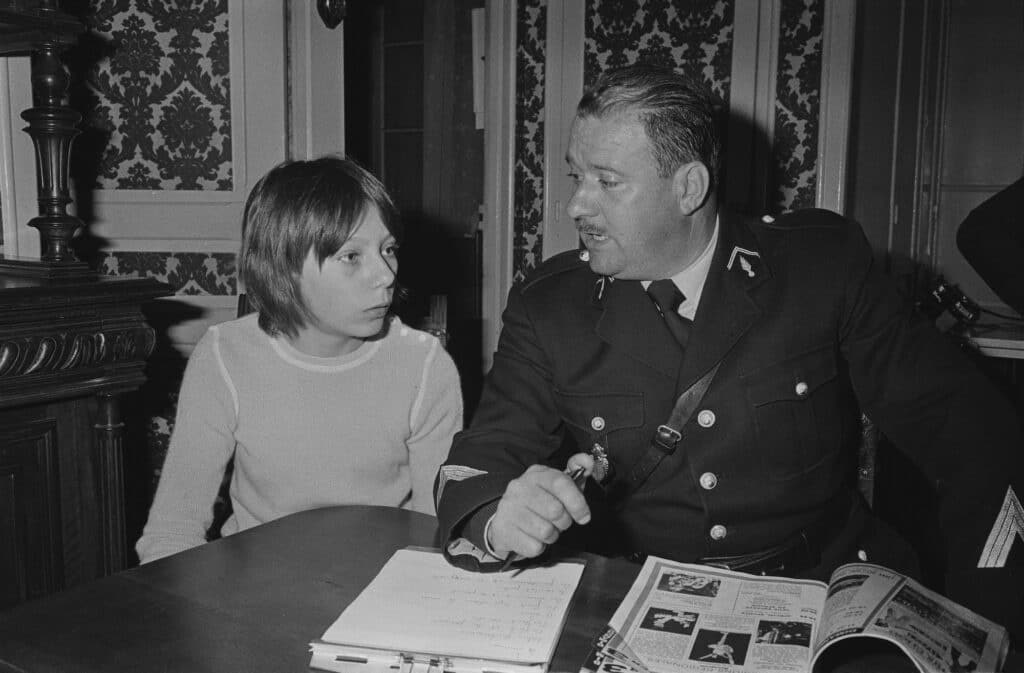Superstitious people, you should walk away. The following stories and photos are somewhat mysterious, unexplained, and paranormal.
The Museum of the History of Medicine at Université Paris Cité, associated with the PhotoSaintGermain festival, is hosting the exhibition “Phenomena. The Unexplained in the face of Science,” a journey through the history of science from 1890 to the present day from the viewpoint of scholars fascinated with the unknown.
The photographs, mainly exhibited for the first time, show rare moments of scientists or individuals confronted with paranormal events. Come and explore cases of psychokinesis, magnetism, levitation, aura photography and other poltergeists.
Blind magazine, in collaboration with Philippe Baudouin, the museum’s curator, offers you several shivering and, at times, unexplained photos and stories…
Nina Kulagina, psychokinesis among the Soviets
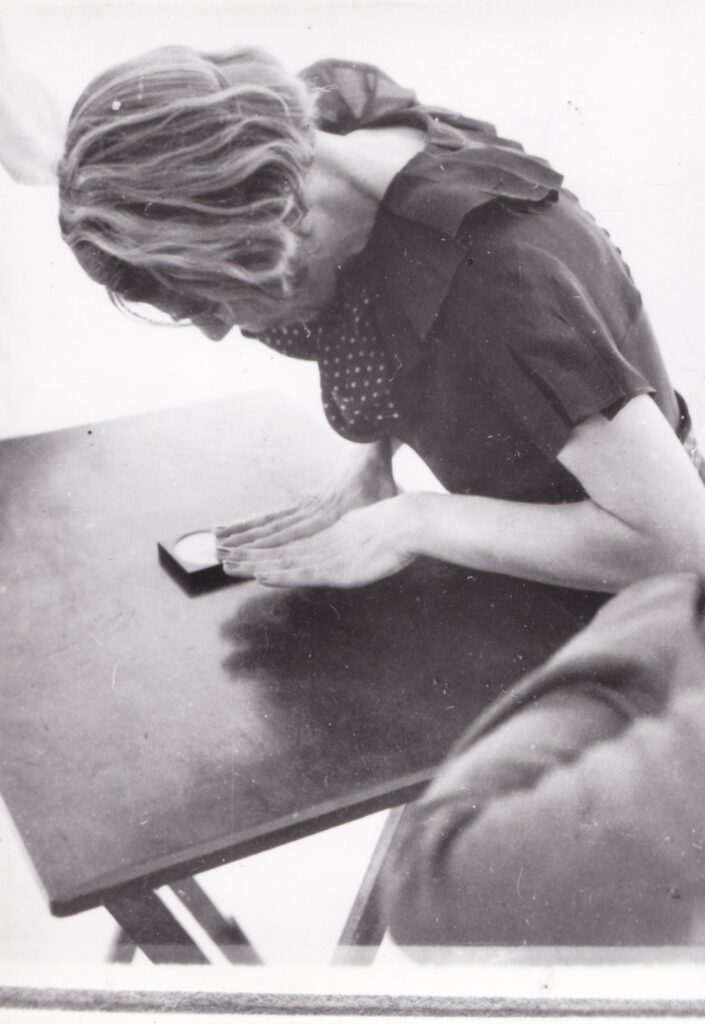
Nina Kulagina (1926-1990) was undoubtedly one of the most famous psychics of the Soviet era. Having studied during the Cold War, she was filmed many times during her well-known psychokinesis experiments.
One of her most famous experiments, led by biologist Eduard Naumov, took place in a laboratory in Leningrad on March 10, 1970. According to witnesses, Kulagina managed to stop the heart of a living frog for a few moments by sheer force of thought. Despite the observations, Kulagina’s “abilities” were quite controversial, with some suspecting the medium was, in fact, an illusionist.
Twisting metals and invisible force
After watching a televised performance of metal twisting by Uri Geller in 1975, Silvio M. (b. 1941), a Swiss-born industrial designer, discovered he had similar capabilities. In addition to twisting metals, he produced astonishing paintings, which he said were the results of his visions.
The phenomena of psychokinesis that Silvio claimed to be at the origin of were studied in 1978 by the British physicist John Hasted. Silvio M. was caught the following year in flagrante delicto of fraud.
A few years after Uri Geller’s televised experiments, three young teenagers, Anita, Patrice and F., approached parapsychologist Yvonne Duplessis (1912-2017), claiming, in turn, to be able to do the same practice from a distance. Duplessis organized several sessions, with their parent’s permission, between 1976 and 1978 and concluded, with photographs as proof, that their “abilities” were genuine.
In order to evaluate F.’s ability to set objects in motion without the slightest physical contact, Yvonne Duplessis set up an instrumental device made up of various accessories, such as scissors, cutlery, needles or even toys, like the magic slate we see here. He used flour to visualize the traces left by the moving objects.
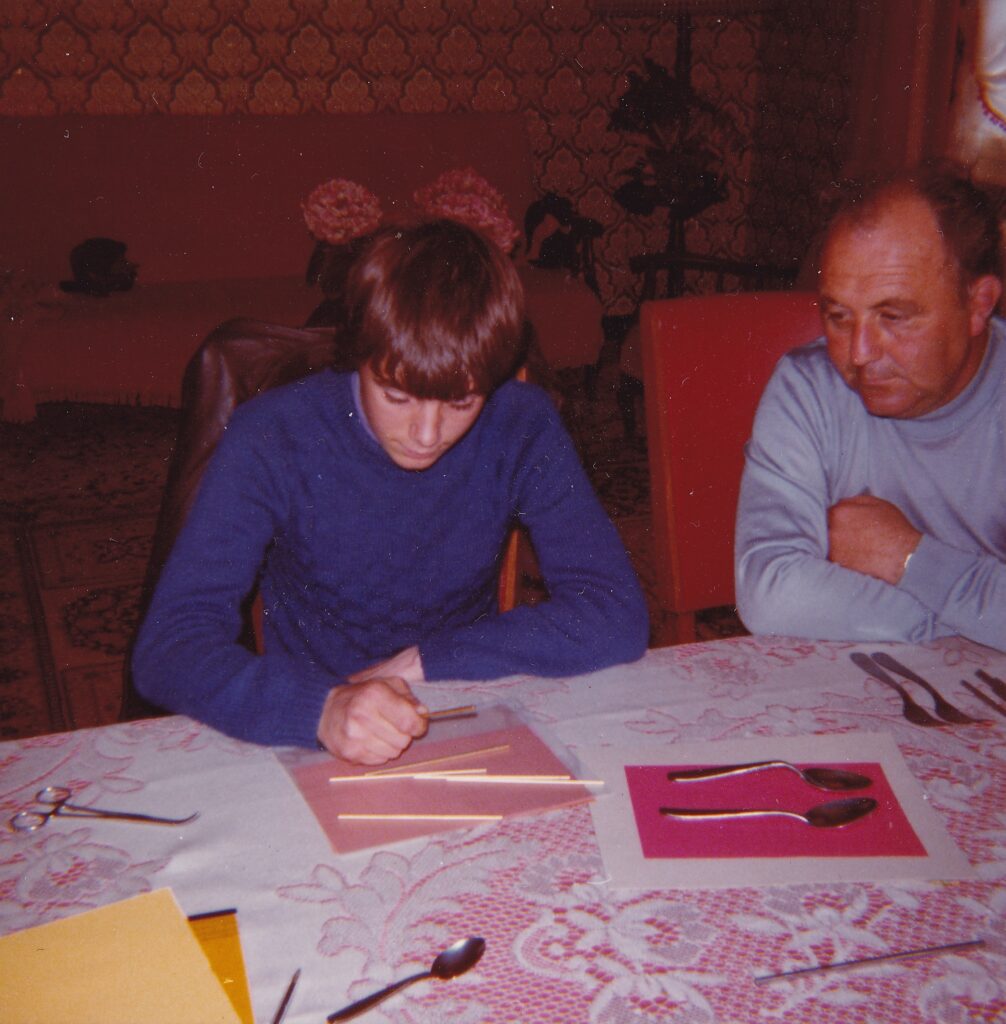
Among the metals that F. deformed, the shutter handle he twisted is undoubtedly one of the most impressive. Yvonne Duplessis, who took the initiative in this experiment, witnessed how the metal gradually twisted under the effect of an invisible force, with the teenager standing several meters away from the object.
A few weeks after Uri Geller’s performances on television, Jean-Pierre Girard (born in 1942) gained fame for similar demonstrations of metal twisting. Although his alleged “abilities” quickly became controversial, poly-technician Charles Crussard deemed, via tests he carried out on him in the laboratory of Péchiney company, that Girard had “conclusive” abilities.
His cerebral activity had shown the emission of alpha waves, symptomatic of a state of deep relaxation, while his heart rate reached more than 160 beats per minute.
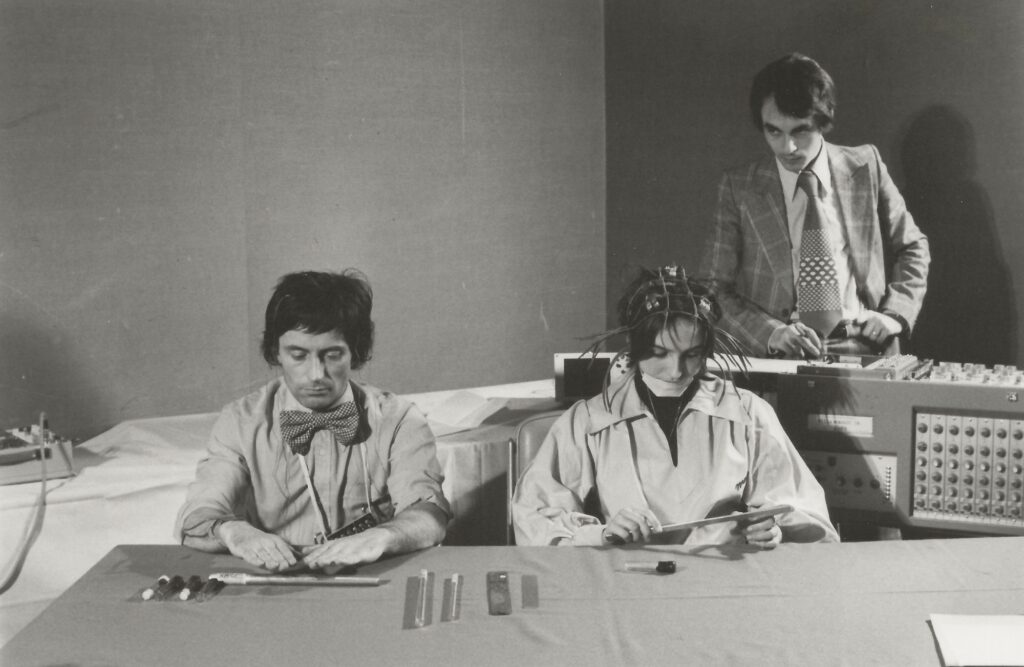
Haunted house and poltergeists
From November to December 1973, a small house in La Machine (Nièvre) became the center of attention. A young boy, Dominique P., claimed to hear knocks on the wall of his room every evening, convinced that a “spirit” wanted to speak with him. The teenager’s parents, distraught by the situation, decided to seek the help of the local police. Despite investigations, the officers, also witness to the phenomena, could not rationally identify the origin of the noises.
Police officer Bernard Guilbert, notified by the teenager’s parents, went to the scene with his tape recorder. Determined to clarify the affair, he recorded nearly thirty minutes of the said event on magnetic tape.
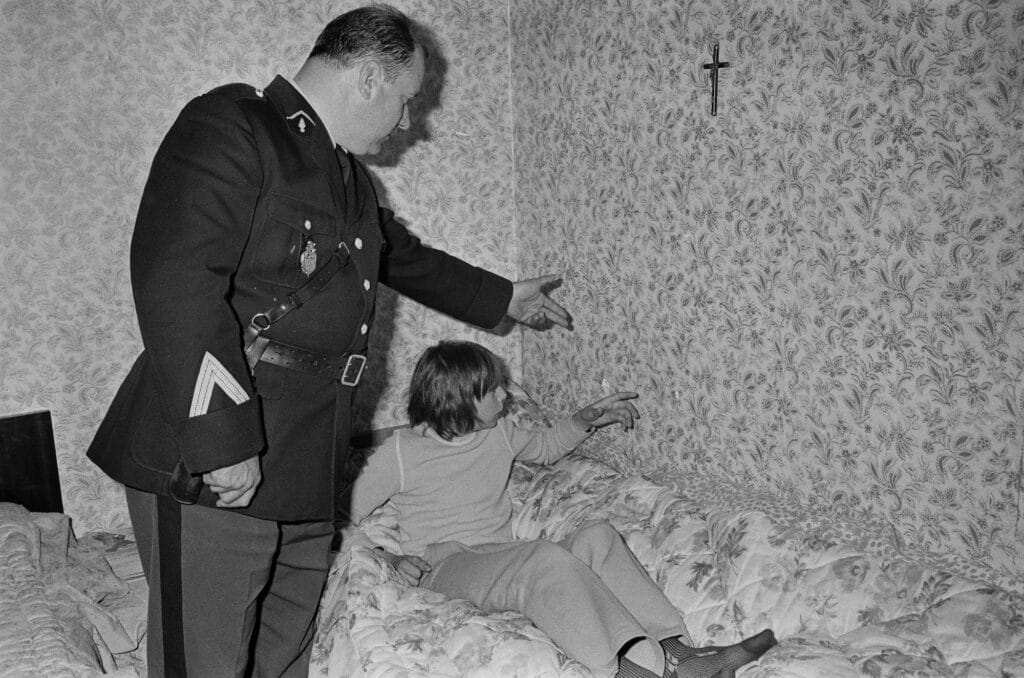
The “poltergeist” of Fontenay-sous-Bois
In January 1979, the tenant of an apartment in Fontenay-sous-Bois and her thirteen-year-old grandson witnessed, for forty-eight hours, some forty objects moving around the apartment, leaving marks on furniture and walls. Denys Renaudin, an engineer commissioned by the I.M.I. to conduct an investigation, took several photographs of the damage he observed on site.
The International Metapsychic Institute commissioned Denys Renaudin in January 1979 to investigate a poltergeist case in the Paris region. The apartment’s owner and her thirteen-year-old grandson, Stéphane, who was staying with her over the weekend, had woken up in the middle of the night by the sound of objects moving around inexplicably.
According to her, glasses, an ashtray, a bedside lamp and several items of her furniture had suddenly been transported from one end of the room to the other, causing considerable damage in their path. Renaudin published a detailed report of the incident based on the audio recordings of the witnesses and photos he took on-site.
Also interested in the matter, Juliette Favez-Boutonier (1903-1994), doctor and psychoanalyst, confirmed the authenticity of the phenomena observed by the witnesses.
Levitating tables
During a session in 1908 under the supervision of doctors Saltetti, Treves, Vitrotti and Basile, Francesco Carancini (1863-1940) managed to throw a table weighing several tens of kilos into the air. Once reported by the international press, Carancini got his hour of glory.
However, it was pretty short-lived: in 1910, the Italian medium, then invited to Geneva by the psychologist Théodore Flournoy and the neurologist Édouard Claparède, was caught in the act of fraud. Unmasked, he had no choice but to retire from public life.
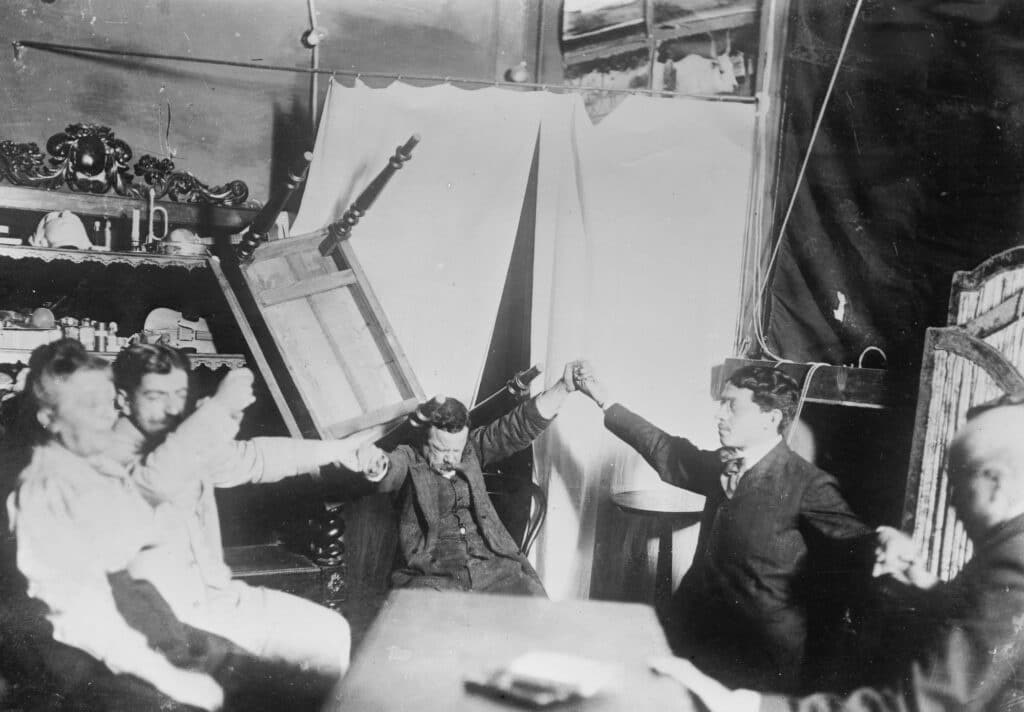
From 1923 to 1935, the year of his death, the Canadian doctor Thomas G. Hamilton (1873-1935) organized various experiments with medium people in his home. In addition to traditional spiritism sessions, Hamilton sought to understand the nature of psychokinesis, for example, table levitations by Elizabeth Poole.
After Julian Ochorowicz discovered her medium powers in 1908, Stanislawa Tomczyk (1889-1975) became a study subject for several renowned scholars, such as her compatriot Marie Curie. In 1914, Tomczyk was invited to Munich by the psychiatrist Albert von Schrenck-Notzing to do a series of experiments on her alleged psychokinetic abilities.
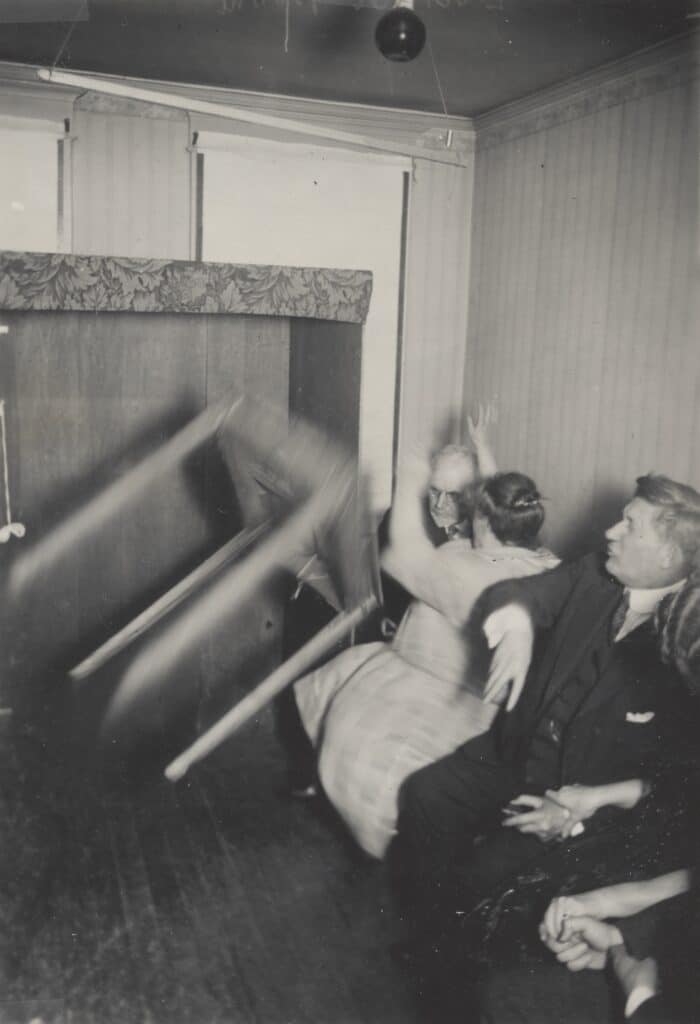
Schrenck-Notzing asserted the authenticity of the unexplained phenomena observed under his control based on numerous photographs he took. Before him, Charles Richet, in his 1922 book Traité de metapsychique (Thirty years of psychical research: being a treatise on metaphysics), wrote: “Under these conditions, a celluloid ball (like a billiard ball) was moved by Stanislawa’s hands being brought near it, a letter-weighing scale was depressed, indicating a pressure of 50 grams; one scale of a pair was lowered five centimeters, celluloid balls in a glass were moved about, and a teaspoon in a glass was flung out of the glass without being touched. All these were repeated several times. The hypothesis of fraud is absolutely impossible, for the whole attention of the observers was concentrated on the hands, which remained motionless during the movement of the objects.” *
“Phenomena. The Unexplained in the face of Science” Until Saturday January 28, 2023.

